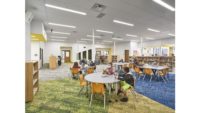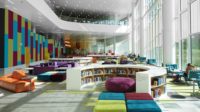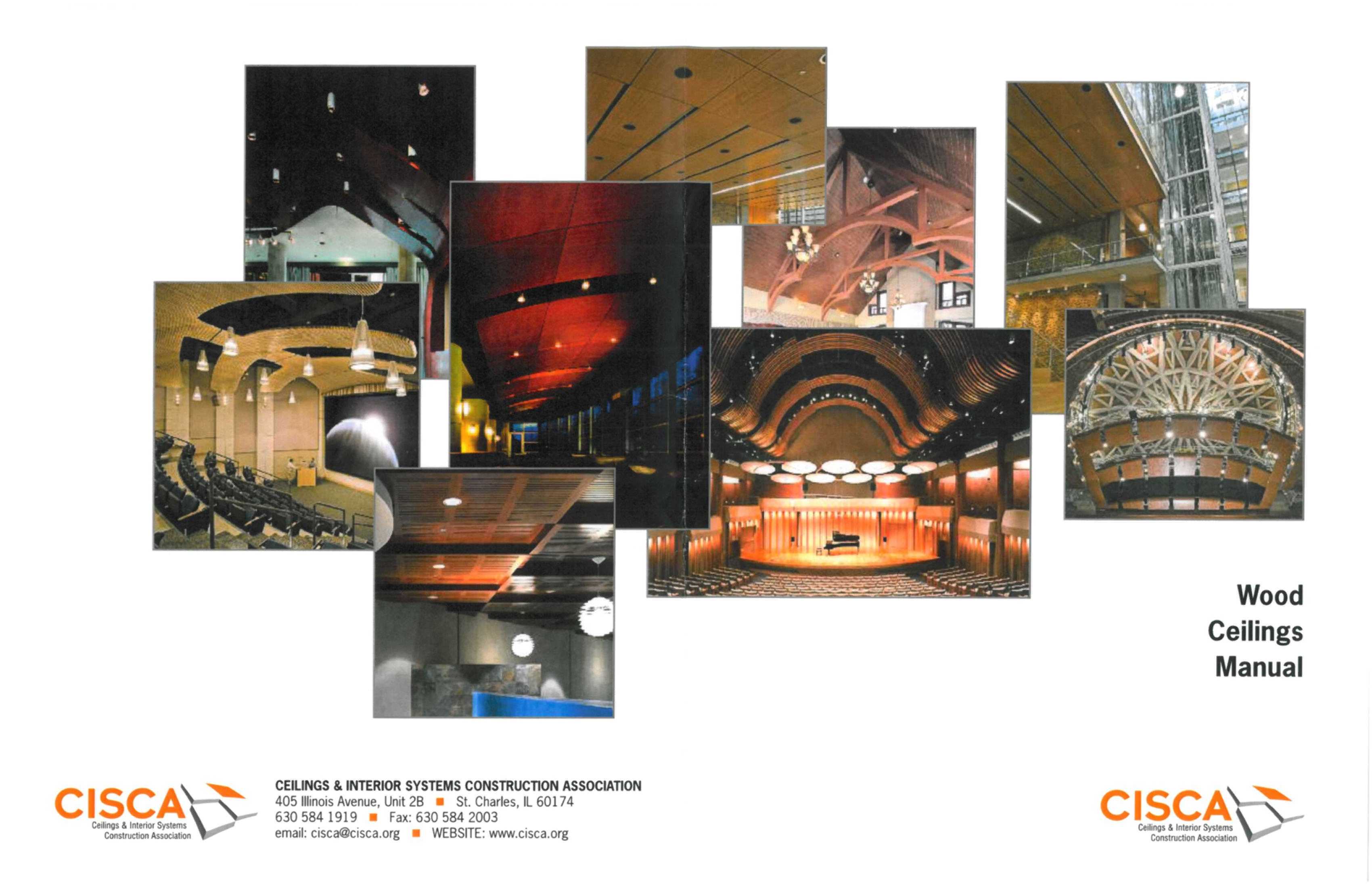Undulating Ceiling Adds Aesthetics and Acoustics
Ceiling Provides Visual Impact and Sound Absorption While Maintaining Look of Existing Exposed Structure

By packaging both aesthetics and acoustics in an undulating ceiling, Atlantic Packaging, a provider of packaging equipment and materials, has added visual impact and sound absorption to its newly remodeled Packaging Solution Center and Customer Experience Center while maintaining the look of the existing exposed structure.
The company recently opened the 50,000-square-foot Solution Center in Charlotte, N.C., to help its customers develop the optimal packaging to protect their products. It is the first of its kind in the industry to offer this type of help to its customers. It is located in a space that previously housed lines of rolling paper cutters.
According to architect Tom Duzan of Redline Design Group in Charlotte, aesthetics, acoustics and imagery were the primary drivers behind the interior design of the new space. “The existing space had a bare-bones industrial warehouse look including a dark, 24-foot-high, exposed pre-cast concrete deck,” he states. “Because of its new function, we wanted the space to be cleaner, brighter and better reflect the modern nature of their business. A traditional acoustical tile ceiling was an option, but we also wanted to keep the open look.”
3-D Curved Metal Ceiling System
To help attain the desired look, the design team selected Serpentina Classic ceiling panels. The panel is a 3-D pre-engineered curved metal ceiling system that adds dramatic visual impact to a space through the creation of hills, valleys, and wave configurations. Especially well-suited for use in exposed structures, the Serpentina panels at Atlantic Packaging are white in color, 2 feet by 5 feet in size, and installed in runs of 50 feet each.
To impart even more visual interest, each run features a pair of undulating ribbons of the panels that installed parallel to each other and offset by half an arc. Duzan explains that Atlantic Packaging’s initial product line was large flowing rolls of paper. “The long, undulating ceiling ribbons represent that portion of their history,” he notes.
An Important Consideration
The facility also functions as a “Customer Experience Center” where the company can demonstrate different types of packaging lines, as well as testing equipment that simulates how to safely and efficiently package products for transport with minimal cost and loss.
To implement this portion of the Center’s function, the company conducts tours of the facility. “Customers must be able to hear and understand the guide,” Duzan states, “so acoustics was an important consideration. In addition, the machinery can get loud, making it even more essential to control reverberation in the space.”
To obtain the desired acoustic performance, the panels are perforated and backed with a white acoustical fleece. This results in a Noise Reduction Coefficient (NRC) of 0.77, indicating the panels absorb 77 percent of the sound that strikes them.
“Even though it is a manufacturing type of environment, we wanted to do something special,” Duzan states, “and the ability of the Serpentina ceiling panels to address both acoustics and aesthetics went a long way toward reaching that goal.”
Much Lower Mezzanine Ceiling Height
Duzan notes that acoustics were also a key consideration in a 10,000-square-foot mezzanine that overlooks the main floor. The elevated level provides customers with a viewing gallery where they can peruse the entire space below. It also houses a conference room and an open space where the company conducts “Stretch University,” a comprehensive training program designed to make customers more knowledgeable about their own stretch wrapping and film application processes.
The architect notes that because the mezzanine is elevated, the ceiling height is much lower than that of the manufacturing floor, resulting in different design concerns. “We wanted to maintain the exposed structure look, but [the] panels were not going to be viable here because of the lower height and the number of light fixtures and other building service elements in the ceiling,” he states.
“Because of the nature of the functions conducted on the mezzanine, we also felt we needed to increase the NRC of the ceilings panels to obtain even more sound absorption and reverberation control,” he adds.
Maintained Exposed Structure Design
To attain the aesthetics and acoustical performance they wanted in the mezzanine, the design team chose Optima Capz ceiling panels from Armstrong. The panels provide excellent sound absorption while maintaining the look and feel of an exposed structure design.
The panels can be installed to a deck, onto drywall or suspended with wires like a standard acoustical ceiling. They are offered in seven square and rectangular sizes ranging from 2 feet by 4 feet to 4 feet by 8 feet, and can be installed in long runs, grouped in clouds, or placed individually based on the acoustical needs of the space.
At Atlantic Packaging, the Optima Capz panels are white and installed in a variety of sizes directly to the deck in between the pre-cast beams. “This allowed us to maximize ceiling height and still keep the open look,” Duzan notes. “In addition, the panels have a very high NRC of 0.90 which means sound essentially gets trapped up there and provides us with the acoustic environment we desired along with the look we desired.”
Looking for a reprint of this article?
From high-res PDFs to custom plaques, order your copy today!










